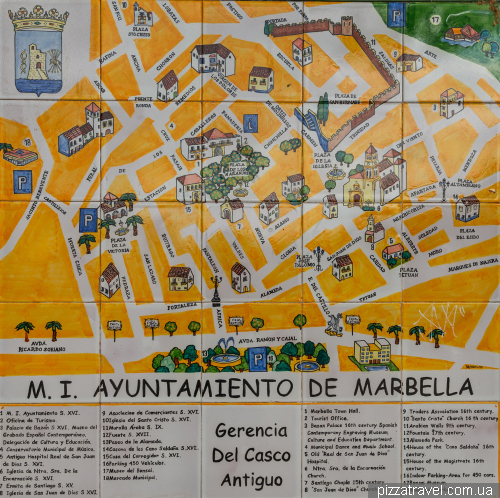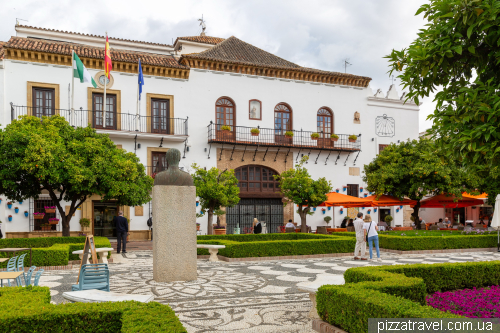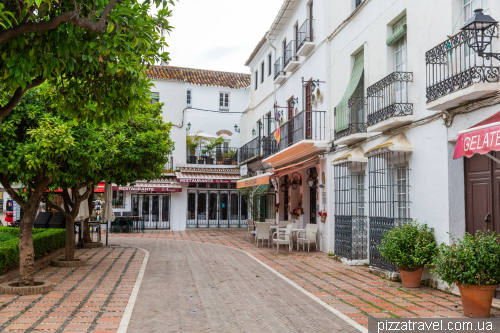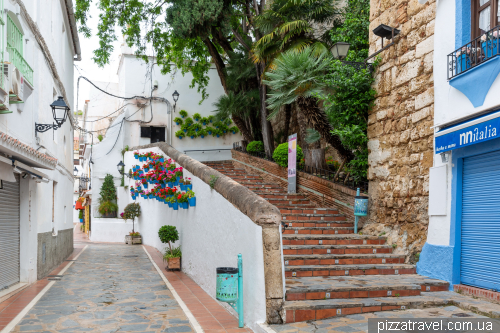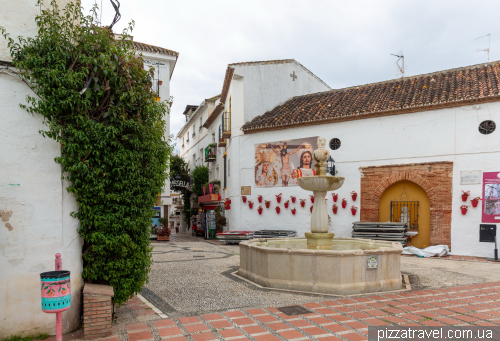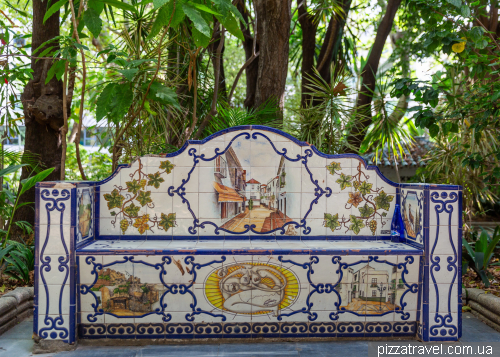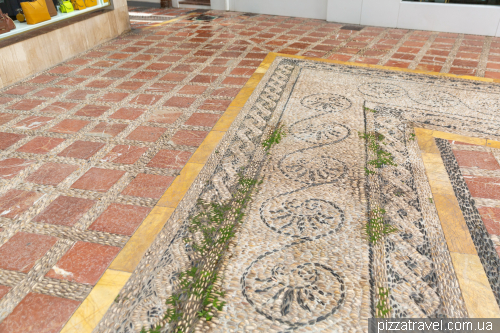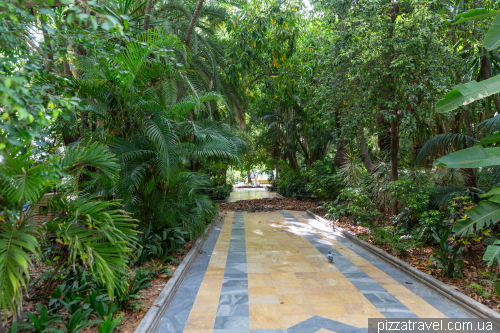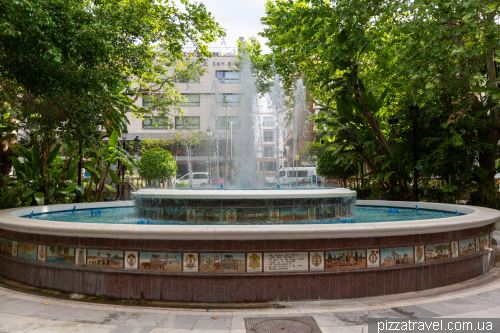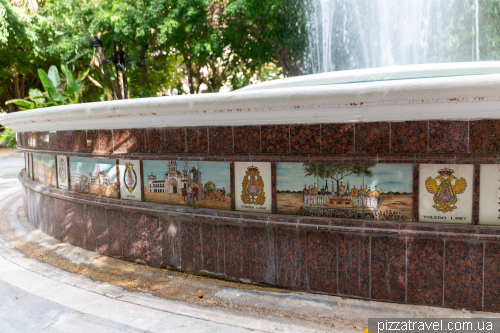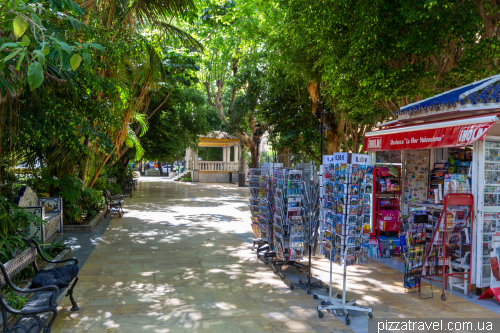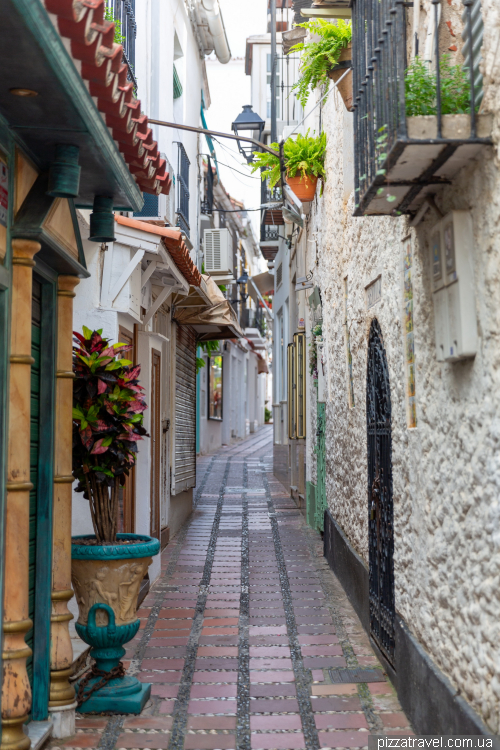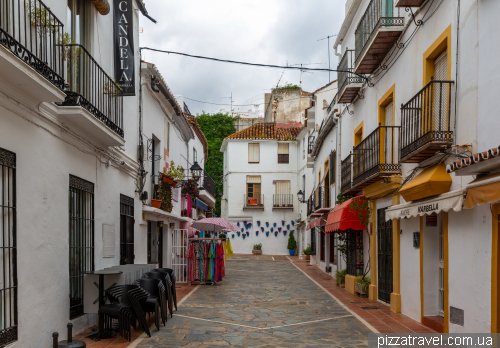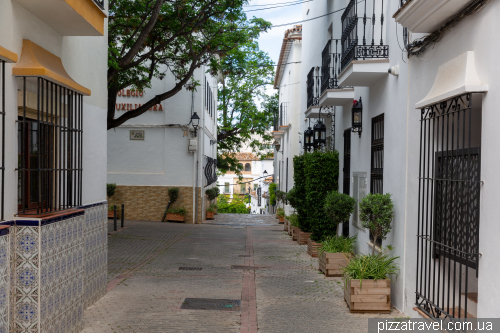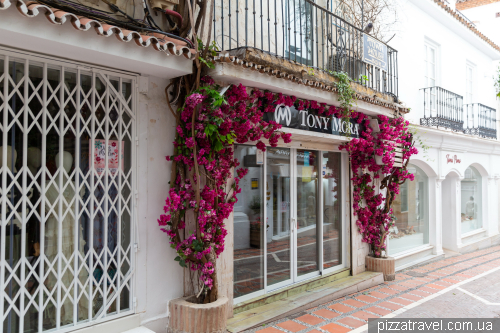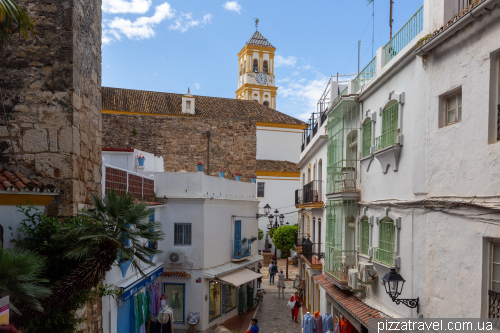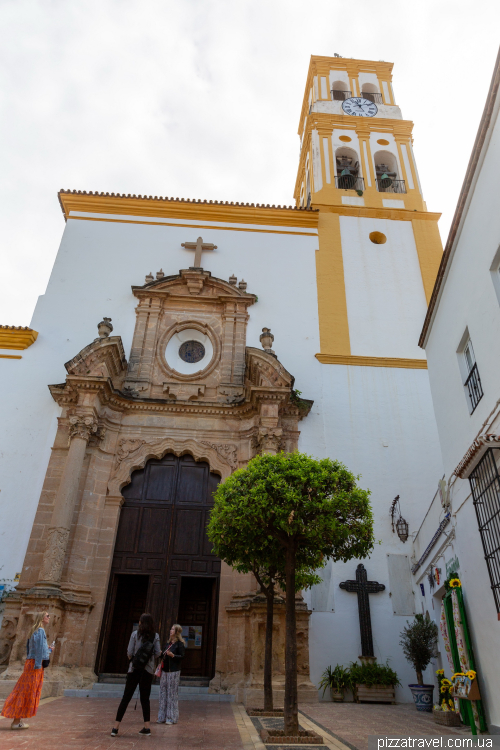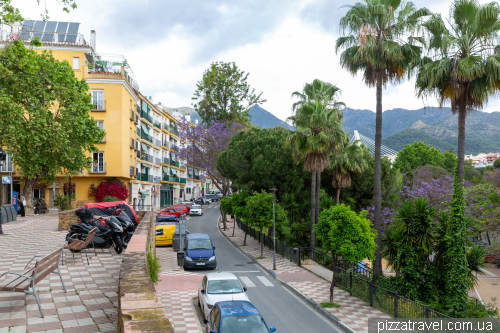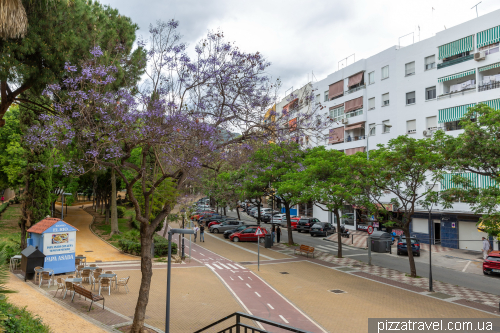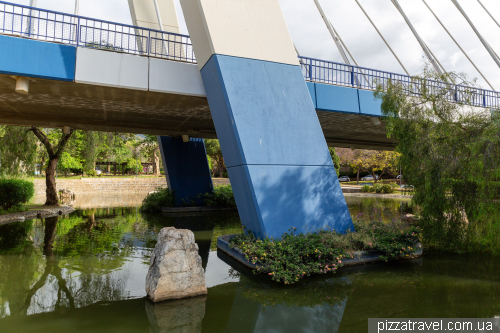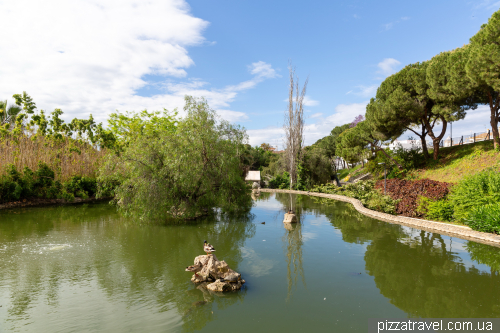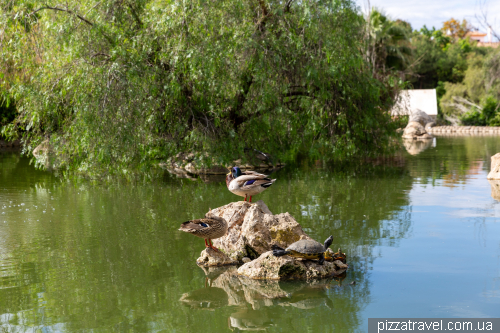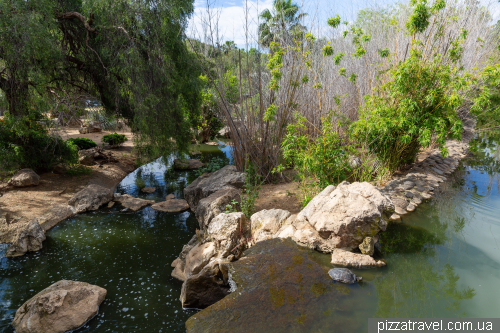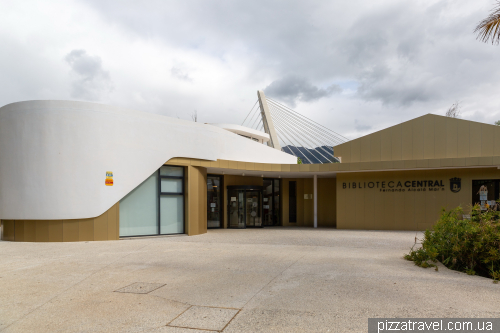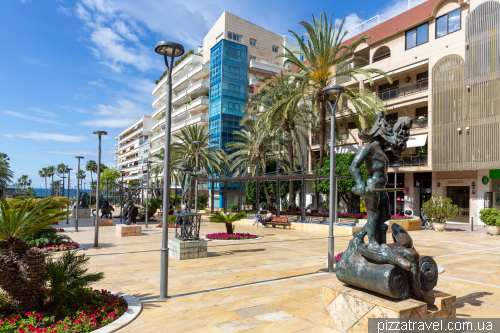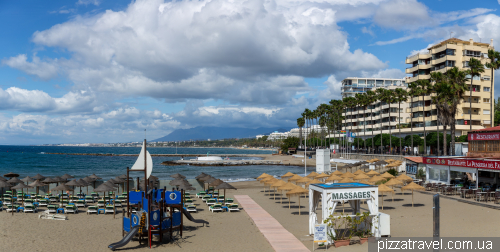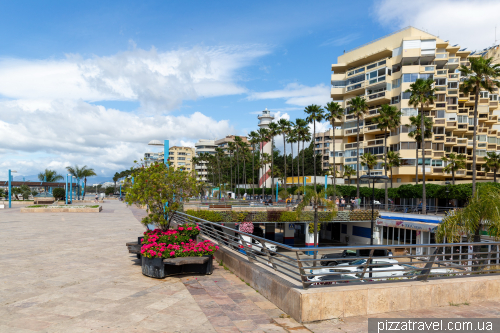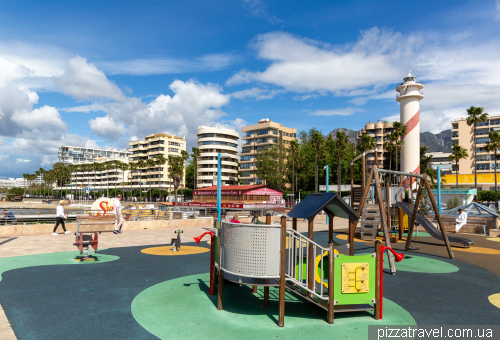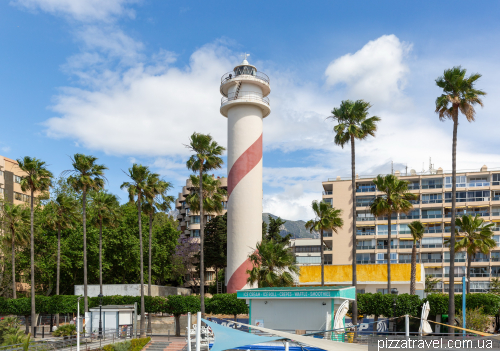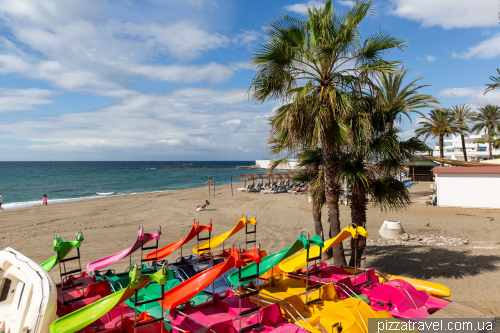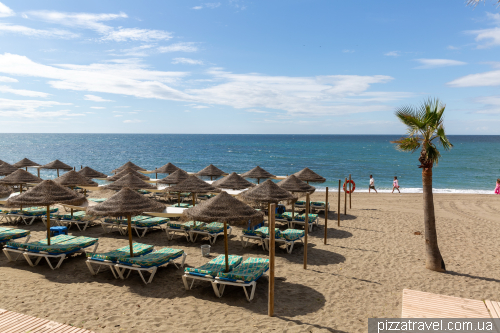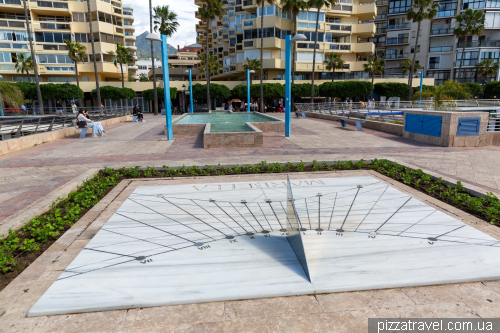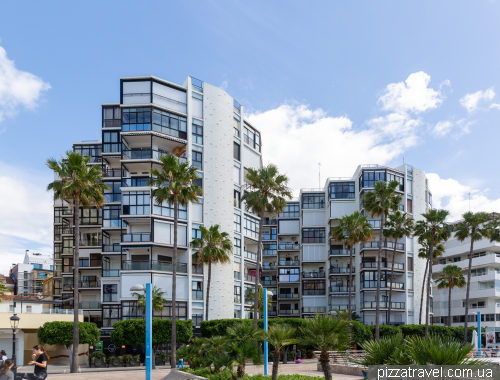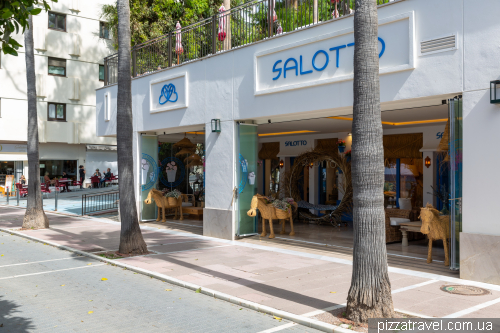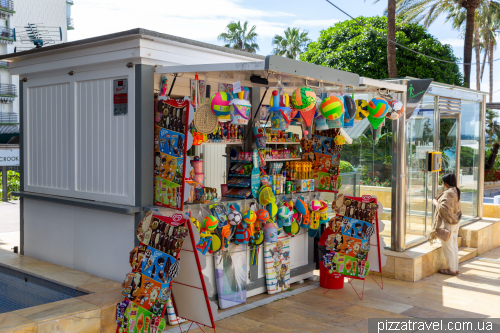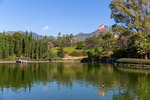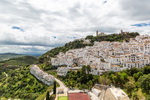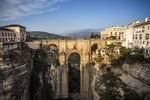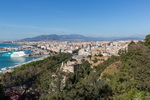The settlement was developed as far back as ancient times. During the Arab period (8th-15th centuries), the city was fortified with walls, part of which have been preserved in the central part. The name ‘Marbella’ itself comes from the Arabic ‘Marbal-la’.
The Reconquista came here quite late, and it was not until 1485 that the city was recaptured by the Catholic monarchs and became part of the Crown of Castile.
Marbella remained a small town until the middle of the 20th century. In the 1950s, Prince Alfonso de Hohenlohe arrived here and opened the Marbella Club hotel, which made the city popular among the European aristocracy and Hollywood stars. Currently, Marbella is an expensive and prestigious resort, known for its promenade and numerous golf clubs.
Marbella attracts a lot of tourists, which detracts from its charm. We arrived in the morning, so we had time to take a stroll through the half-empty old town. Here is a map of the town, with the Plaza de los Naranjos (Orange Square) in the centre. You can also see the remains of 11th-century Muslim fortifications.
The main church of the city, Iglesia de Nuestra Señora de la Encarnación, was built in the 16th century.
We walked through the old town and ended up in the city park, Parque de la Represa. There is a nice playground, a library, and an area with water and turtles.
If you head towards the sea, you will come to the promenade (Avenida del Mar), where there is an interesting area with sculptures, including some by Salvador Dalí.
Getting there: good covered parking in the city centre 36.508528, -4.886111. On Avanza/Avanzabus buses from Malaga Airport. There are also buses from the centre of Malaga, from Estación de Autobuses Málaga (the main bus station next to the railway station).
